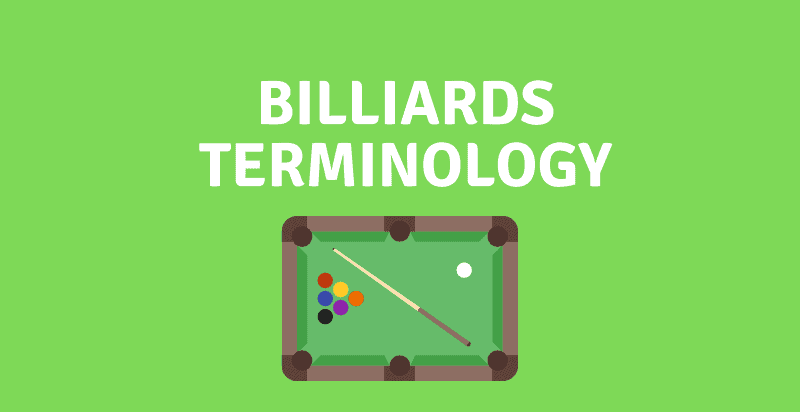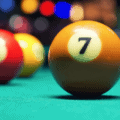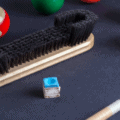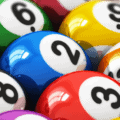If you are new to billiards or just starting to enjoy it, we have put together a glossary of terms to help you understand the game better. We have found over the years that the more knowledge you have of the terms, the more likely you are to enjoy the game and continue to improve your skills.
Just like any other game, to feel more confident playing with your friends at the bar, or to become a good amateur or professional, you need to understand the terminology and lingo. If you know these terms you will feel like you fit in.
Glossary of Billiards Terminology
Angle shot: Also called a cut short, any shot in billiards that is not straight in on the board is called an angle shot.
Action: This is a commonly used term around the billiards table and is another word used for gambling in the game.
Around the world: This is a way of tracking the games won by each player by making use of a coin that the player who wins a match places under the rail. The central diamond on the table is counted as zero and every coin counted to the right or left of the central diamond is considered one game point. Going ‘around the world’ means that you beat your opponent so badly that the coin goes one full circle around all the diamonds on the billiards table.
Backspin: When a ball rotates in the opposite direction to its course of travel, it is called a backspin.
Bank shot: Any shot that requires the object ball to touch or strike the cushion on the table in order for the ball to ultimately land in one of the pockets is called a bank shot.
Bed of table: The playing surface on the table – the actual playing surface area on the table minus the cushions is called the bed of table.
Break shot: This is probably one of the most common terms used in billiards. A break shot refers to the first shot in a game of billiards.
Bridge: The support on the table that the cue needs when it goes back and forth before taking a strike is called the bridge.
Barrels: This refers to the amount of money a player puts in the game as betting.
Call shot: This is a common rule in the game of billiards where the shooter is required to indicate which ball they intend to pocket and all the cushions in between the player will make use of.
Cannon: A shot in which the cue ball contacts an object ball on the table after a strike is made is called a cannon.
Chalk: Chalk is referedd to a small cube of a prep-pared chalk that is used the rub the tip of the cue stick, make it sharper and prepare it for the strike.
Clean the table: The process of pocketing all the remaining balls on the table after a strike is made is called cleaning the table.
Clearance: When a ball is hit out of its defensive area, that act is called clearance.
Cue ball: The white ball that the cue stick strikes is called the cue ball. Again a very commonly used term on the table and one you must be aware of.
Diamonds: The circular shaped inlays on the rails that are used as reference points are called diamonds in a game of billiards. Diamonds usually divide the end rails into four equal parts and in eight parts for the side rails. Diamonds are also sometimes called sights.
Double: Double is referred to an act or a strike in which the obejct ball is struck in a way that it rebounds against the opposite pocket and the cushion on the sides of the billiards table .
Frozen ball: A ball on the table that gets in contact with another ball after a strike is made is called a frozen ball.
Head spot: A head spot is actually an imaginary spot that is two diamonds from the head rail that sits in the middle of the table.
Hug the rail: When a ball is rolled along the edge of the rail, it is called the hug the rail.
Jump shot: A deliberate shot played by the player that makes the cue ball jump off and leave the table is called a jump shot.
Leave: When there’s difficulty in striking a ball that is left on the table from the previous player. It’s usually left in the good spirit that it is a good challenge for the next player to play or strike a difficult ball on the table.
Open table: A situation in a game of billiards where no player has a clear indication of the number of balls that is designated to each player.
Run the table: The act of pocketing all the balls remaining for one player is called running the table.
Rack: A rack is the device that is used to position all the balls and prepare them for the opening shot.
Shaft: The front (narrow end) of a cue stick is called a shaft.
Sharking: Sometimes players on the table use devious tactics to ensure they can psych-out an opponent. Those tactics are called sharking.
Scratch: When a cue ball accidentally lands in a pocket, it is called a scratch.
Slate: This is a device – a little piece of rock – that is used for the table bed.
Snooker: When a game of billiards is played with 21 object balls. A snooker table is generally larger in comparison to a usual pool table.
Stripes: The balls that are numbered nine through fifteen are called stripes.
Solids: The balls that are numbered one through seven are called solids.
Related: How to Play Better Pool
Pool Terminology Video – and How to Play Billiards
This video is a great overview of the terms above. If you have read this far, you will definitely find this video educational and learn a few things.
Summary
We hope this review of common billiard terminology and lingo helps you improve your game. Personally, pool or billiards is one of our favorite games we write about here on this site!
We know from our own experience that the most familiar you are with terminology, the more comfortable you will feel playing the game. And if you have more fun and are more comfortable it is likely your skills will improve too.
If the terms have inspired you to invest and/or learn more about the game be sure to check out our articles on How Much to Spend on a Pool Table, The Best Pool Tables and the Best Pool Cues.
Other Game Terminology Posts

I’m Lia and I love playing games. I started this site to share things with friends and they encouraged me to post more and now I’m trying to share things with the world – indoor and outdoor sports, and board and bar games. I write about things like Bocce, Croquet, Billiards, Darts and other fun ways to enjoy time with your friends and family!




